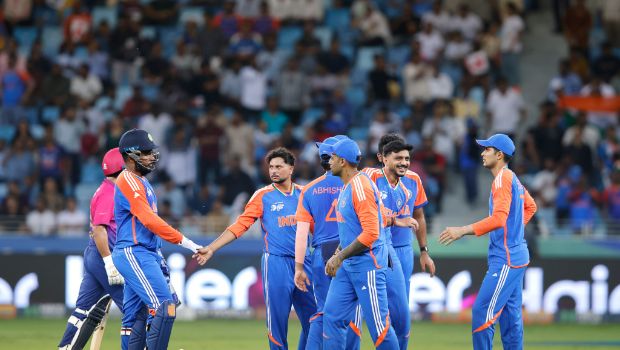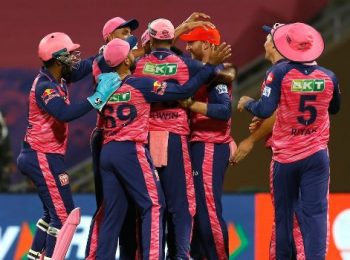The second meeting between India and Pakistan in Asia Cup 2025 is expected to offer a better takeaway for cricket fans than the first one. India were dominant in game one, and this quick turnaround provides another chance to see how the two teams stack up against each other. The dynamics remain similar to what was discussed before their first meeting, but with some new factors now in play.
For Pakistan, their best chance of winning lies with the ball. Their batting has been inconsistent and carries several concerns. Saim Ayub, for example, has struggled at the top of the order, recording back-to-back ducks. This has created uncertainty, and Pakistan have been forced to rejig their batting order slightly. The lineup doesn’t inspire full confidence at present.
One positive has been Fakhar Zaman, who has performed well, even when moved down to bat at number three. His contributions have helped stabilize innings at times. In my view, he should now open the innings to ensure that he is playing more balls as he is the man in form. However, it is clear that the strength of Pakistan remains their bowling attack, not their batting.
In the match against UAE, Pakistan made changes to their bowling unit. Haris Rauf returned to the side, and it seems likely that he will retain his place against India. His inclusion, however, means that the left-arm wrist spinner Sufiyan Muqeem is likely to miss out. Not to forget that Ayub has been has bowled effectively in this tournament so far, giving Pakistan another useful option. The balance of their attack is such that they can still call upon three spin options if the conditions demand it.
The real core of Pakistan’s strength over the last five to eight years has been their pace attack. With Shaheen Shah Afridi and Haris Rauf in the side, that focus returns. This pair represents the cutting edge of Pakistan’s bowling, the foundation upon which they have built much of their competitive success. It seems probable that Pakistan will place greater emphasis on pace this time around, unless they revert to a spin-heavy strategy to add variety.
A spin-heavy attack still remains an option for Pakistan. However, the issue in the first game was not necessarily their bowling but batting. The batters failed to provide a big enough total for their spinners to exploit. Without sufficient runs, their slow bowlers could not truly apply pressure.
It is a tough task for Pakistan to beat India. It will require execution at the absolute highest level. Pakistan’s mercurial quality—their ability to change games suddenly—remains their wild card, but they will need to be at their absolute A-plus best to succeed.
India, by contrast, have most bases covered. Their squad looks balanced, their performance levels are high, and they approach this second meeting as the clear favourites. They are widely seen as the best side in the competition. For opponents, the key question remains whether they can find a way to unsettle this dominant Indian team.
One area where India have occasionally been tested is with the new ball. Opposition batting lineups have felt their best chance of success is to attack early, before India’s spinners can take control. As a result, bowlers such as Hardik Pandya have been a little expensive with the new ball. Despite this, India’s overall bowling resources are still formidable.
Arshdeep Singh stands out as a strong option in the pace department. Although some feel his inclusion alters the balance of the team, I strongly feel that he would enhance India’s attack, particularly in conditions that don’t favour pace. From a strategic standpoint, he could complement India’s spin-led middle overs, spearheaded by Kuldeep Yadav.
Kuldeep remains the leader of India’s spin attack and is central to their success. Batting sides often seek fast starts precisely because they know once Kuldeep and his fellow spinners take charge, scoring becomes difficult. India’s spinners represent one of their greatest strengths, but their pace bowlers, too, can deliver. The debate about whether Arshdeep should be brought in reflects India’s enviable depth rather than a weakness.
In terms of batting, India have no major issues. The top order has plenty of strength, and the middle and lower orders provide depth. There is little reason to believe the management will change the batting order at this stage. Nonetheless, one suggestion is that Sanju Samson could open, with Shubman Gill moving to number three. Suryakumar Yadav could then slot in at four, followed by Tilak Varma at five. This adjustment is more about tinkering to achieve maximum efficiency rather than addressing any deficiencies.
India’s batting has already proven effective, and the side possesses multiple strong options at the top and depth throughout the order. The emphasis for them is not about fixing weaknesses but rather about considering how to make a very good system even better.
India are the most complete side in the competition, with balance in both batting and bowling, and a proven ability to dominate. Their spinners give them control, while their batting lineup offers power and stability.
Pakistan, on the other hand, must find a way to unsettle India. Their best opportunity lies in their bowling attack, especially with Shaheen Shah Afridi and Haris Rauf leading the pace unit. To capitalize, Pakistan will need to strike early and then use their spinners to apply middle-overs pressure. However, this will only work if their batting can provide enough runs to support the bowlers.
India, meanwhile, enter this game as the team to beat, looking to cement their position as the best side in the tournament.



























